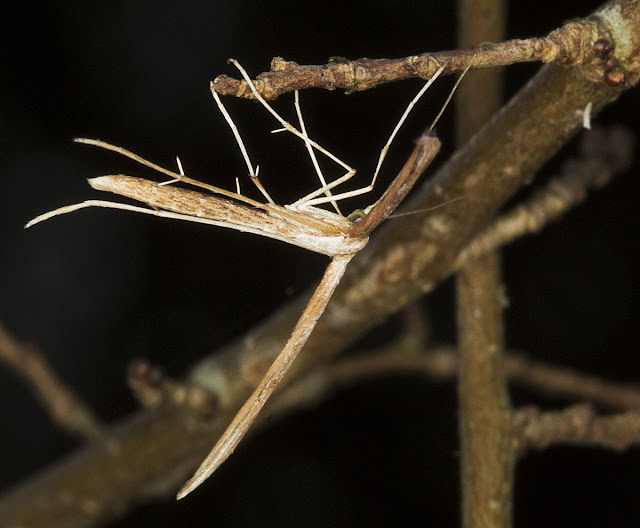 |
| Hard Shield Fern, Polystichum aculeatum, left; Broad Buckler Fern, Dryopteris dilatata, right. Scadbury Park, 21 January 2012. |
On Saturday 21st January I joined the Orpington Field Club field trip to Scadbury Park, 300 acres of Local Nature Reserve, with woodland, grassland and the ruins of a historically important manor house.
In the middle of winter, I think there were pretty low expectations of interesting natural history. Nine people turned up, quite a small group for the OFC. But I had a good time; I found a dozen species of fungus and was shown some mosses. There were also some ferns in the wood. The top photo shows the difference between the leaflets of the Hard Shield Fern and the Broad Buckler Fern, both still showing plenty of green leaf. The Broad Buckler Fern has a frond which subdivides twice. The Hard Shield Fern does not quite do that; the pinnules have one thumb, more or less distinct, and are otherwise just toothed. It was interesting to see a Hard Shield Fern; two of us had just been shown a sample in our wildflower class the day before, otherwise I would certainly have not known what it was, and even then it had to be pointed out to me. It looks a lot like the much more common Male Fern.
There were some nice examples of fungi that I have either already posted or will soon.
 |
| Witches' Butter, Exidia glandulosa. Scadbury Park, 21 January 2012. |
This uninviting, jelly-textured black growth is Witches' Butter, Exidia glandulosa. It was all over a very large felled oak tree. There was also plenty of this:
 |
| Split Porecrust, Schizopora paradoxa. Scadbury Park, 21 January 2012. |
A pored fungus whose pores are in separate little fingerlets. It is quite common on the lower sides of fallen trees.
This moss was available both wet and dry, which shows that when it dries up it shrinks into little spirals.
 |
| Bryum capillare. Scadbury Park, 21 January 2012. |
This next one is very common, and there are a few others that look quite similar so you seem to see more of it than you actually do. But it can be quite striking.
 |
| Turkeytail, Trametes versicolor. Scadbury Park, 21 January 2012. |
The common name Turkeytail seems quite apposite.
Finally for today, one of the group found this plume moth in a little bush. It was hanging on to a branchlet and being blown back and forth in the breeze, and this is the best shot I could get. I think it is a Stenoptilia, but to find the species you need to kill it and examine its genitalia under a microscope, something I do not wish to do. It's interesting to see one around in January.
 |
| Plume moth, probably Stenoptilia species. Scadbury Park, 21 January 2012. |
I have some more photos, some of them not properly identified; I'll post them when I have a better idea of what they all are.






No comments:
Post a Comment